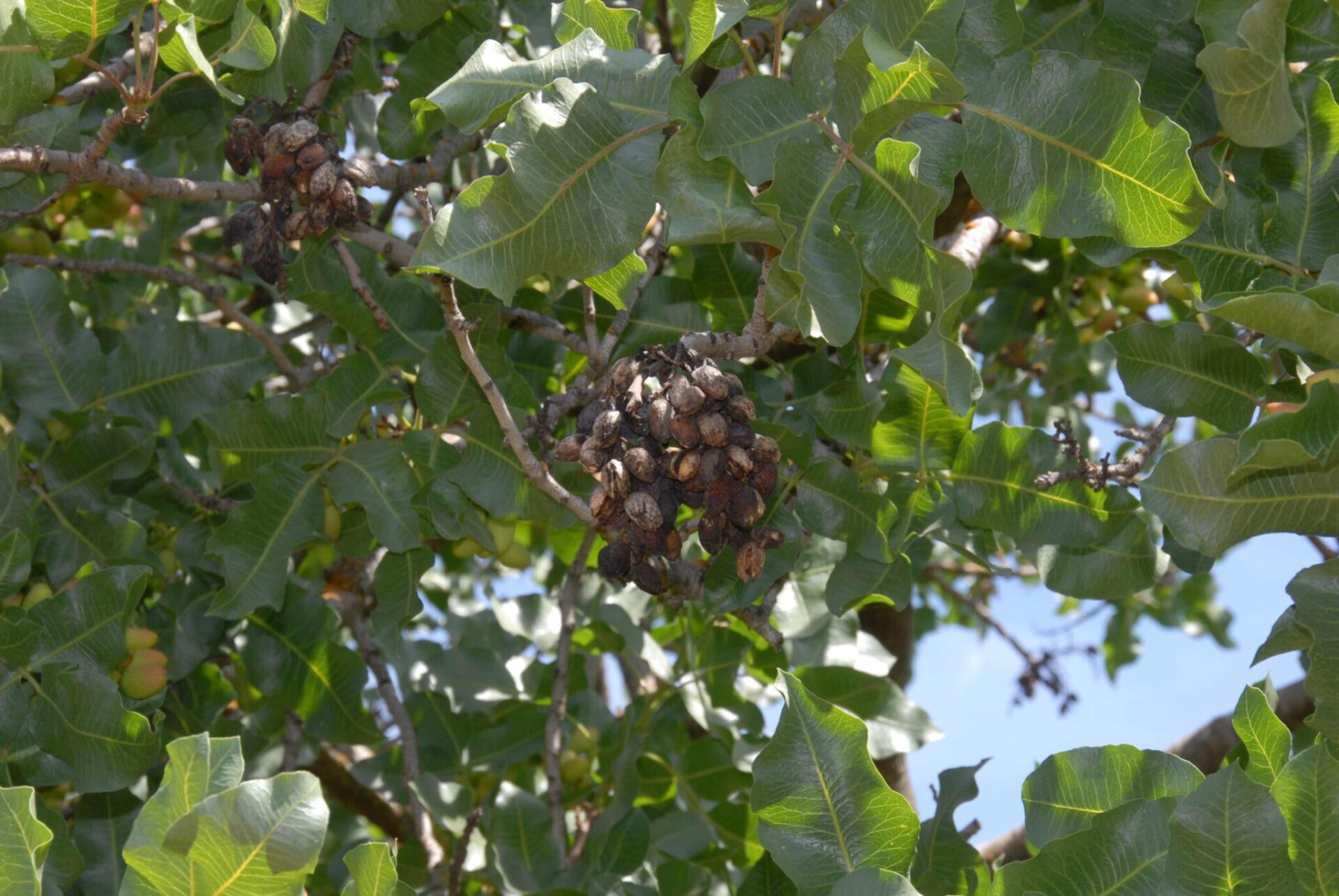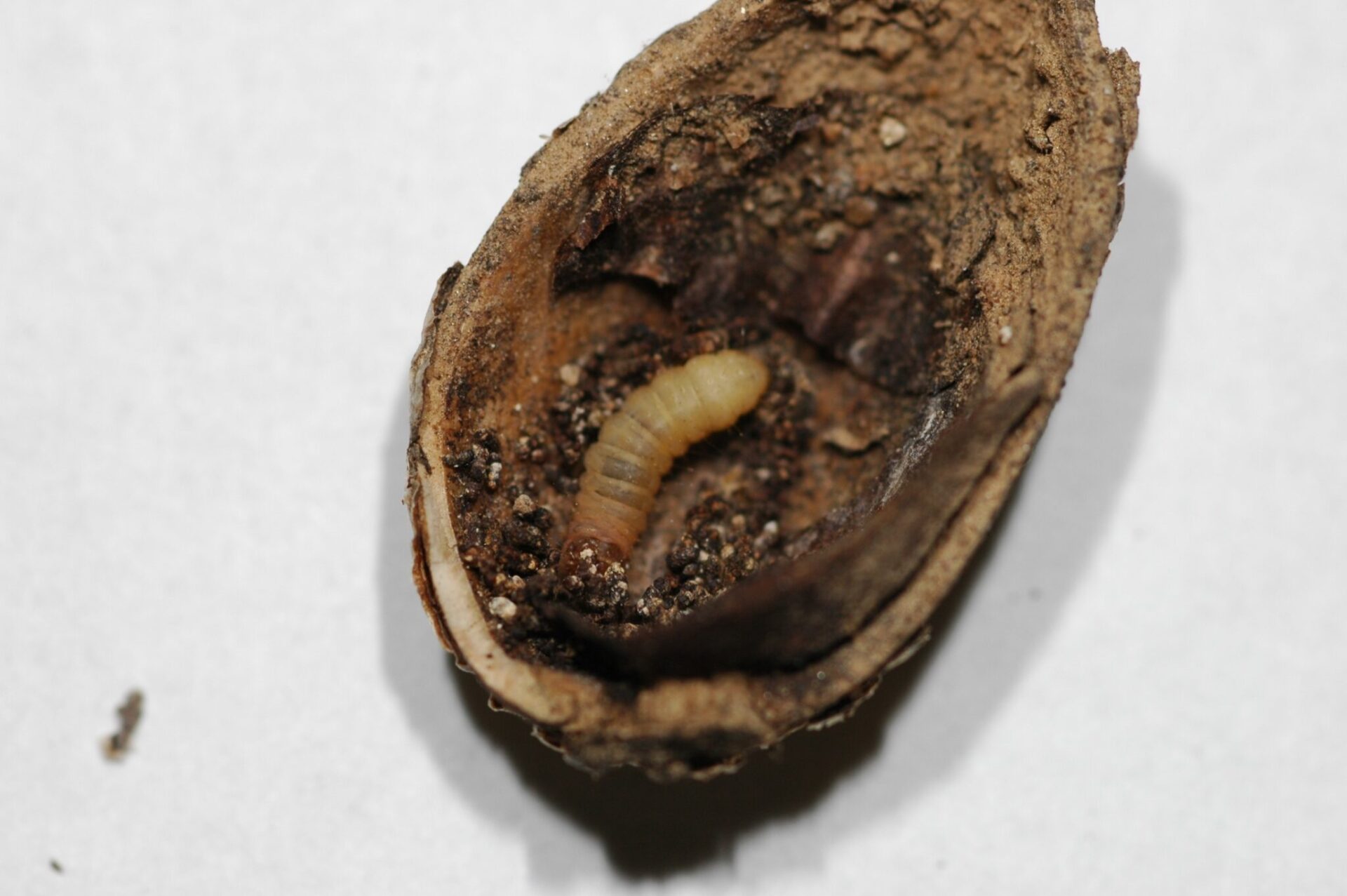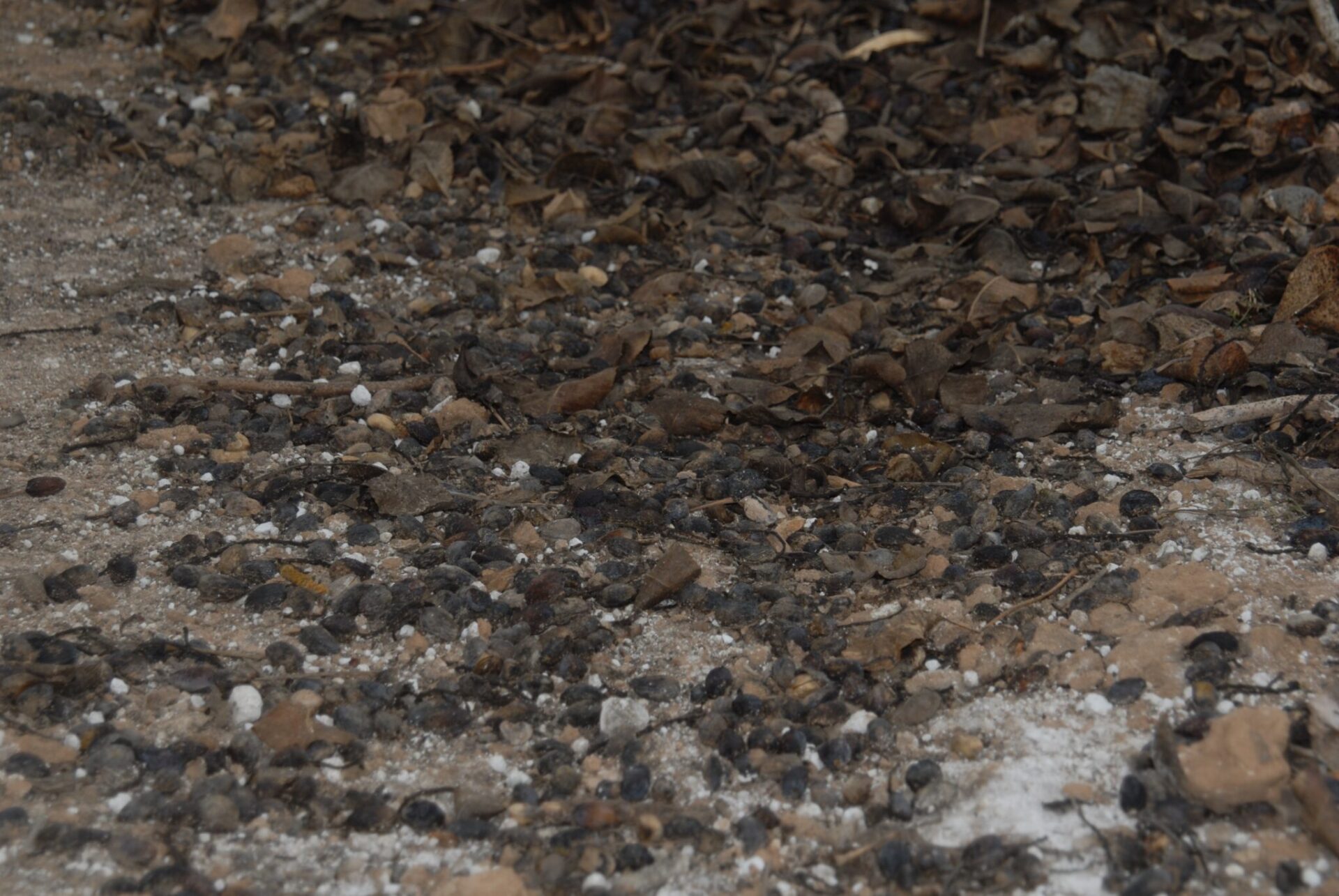
One benefit that pistachio growers are reaping from an increased adoption of double shaking is improved winter sanitation. But viewing an extra shake as a replacement for winter sanitation is a mistake, according to navel orangeworm experts.
The second shake, now widely employed in California pistachio production, can do wonders for removing navel orangeworm (NOW), but additional sanitation is needed, according to Joel Siegel, an ARS entomologist based in Parlier, Calif. And, Siegel said, the best thing a grower can do to minimize NOW populations during the dormant season is get nuts on the ground.
Let Nature Work for You
“The number one thing you can do is to get the mummies off the tree and on to the ground, because then we have these natural processes that can work in your favor,” Siegel said. “The sooner they are on the ground, the greater the opportunity for the nuts to get wet and rot.”
Particularly in the southern Central Valley, where a year’s worth of rainfall can fall in a six-week period spanning December through January, getting nuts on the ground quickly is critical, Siegel said.
“You are trying to get them on the ground as soon as you can to take advantage of the rains coming through,” he said. Vegetation on orchard floors can help capture moisture and humidity and facilitate rot, Siegel said. And nuts on the ground are more likely to germinate than nuts in a tree, taking them out of play as a winter food source for NOW.
“About 80 or 90% [of NOW] mortality happens over that six-week period (in early to mid-December to mid- to late-January),” Siegel said. “That is why it is so critical to get the nuts on the ground as soon as possible.”

Two Shakes Reduce NOW Pressures
With the widespread adoption of double shaking—Siegel estimates it is performed on 70% of California pistachio acreage today—NOW populations going into the dormant season are significantly reduced from days past, Siegel said.
“One of the greatest pest-control activities a grower can do is to shake,” Siegel said. “You have all of those eggs that are laid on the hull that haven’t hatched yet. They are pulled out of your orchards. Any infested nuts are getting pulled out, and you also are getting your sound nuts out.
“You are removing several different life stages of the navel orangeworm,” Siegel said, “including the newly laid eggs and the navel orangeworm that are in infested nuts. So, you are putting a tremendous hit on that population.
“At the same time, what people are doing is they are doing an extra spray between shakes to protect the nuts on the tree before they do that second shake,” Siegel said. “So, you are getting the benefits of the insecticide and you are coming in and removing infested nuts.”
Some growers, after calculating potential yield benefits versus harvest costs, have started doing a third shake. Often, however, quality issues come into play when considering a third shake, Siegel said.
“The longer the nuts are out there, the greater the opportunity they have to get contaminated with Aspergillus fungi (which causes aflatoxin),” he said.
A third shake also carries the potential of reducing the next year’s crop if shaking too vigorously.
“The downside is if you are shaking too much budwood off, you are sacrificing next year’s crop,” Siegel said.
Whether one, two or even three shakes, however, more nuts remain on trees after harvest, Siegel said. And, despite the fact that a certain percentage of the nuts are blanks, odds are that many are a prime food source for NOW.
“The thing with pistachios is you have to deal with the odds,” Siegel said. “You have to shake everything, get it off, even though not everything is a threat.”
Siegel added that his research has shown the survival rate of NOW in mummies on a tree is three times greater than in mummies on the ground.
Multipronged Approach
For pistachio producers, controlling NOW is a nearly year-round, multipronged task. But winter sanitation has long been identified as maybe the most important NOW control strategy.
“When you go to industry get-togethers, the navel orangeworm is always a part of the presentation,” said James Nichols of Nichols Farm in Hanford, “and each farm advisor and PCA that talks says that orchard sanitation is the best way to combat this pest.”
Nichols, who is developing a pistachio grinder that could dramatically improve winter sanitation programs (see related story in this issue of West Coast Nut), performs a post-harvest shake to knock nuts off trees as part of his winter sanitation program, an activity Siegel recommends for growers with access to shakers. And Nichols typically will send a hand crew through orchards with bamboo poles to knock mummies out of trees.
“If there is a high number of mummies still left in the tree, we will send a pole crew through,” Nichols said.
Getting nuts out of crotches, another spot mummies will collect after harvest, is also an important winter sanitation activity, Siegel said. “They have to get swept out, removed from the crotch and onto the ground,” he said. Many growers use pruning crews to remove nuts from crotches, he said.
Outside factors also can play a role in the success or failure of a winter sanitation program, Siegel said, including what is happening on your neighbor’s farm, a factor increasingly pertinent with the steady increase of tree nut production in the Central Valley. And, Siegel said, there is always the chance that an almond grower will come through and destroy almonds left after harvest by mechanical means, an option not currently available for pistachio growers, and cause NOW to go look for an alternate food source.
“That has always been a fundamental difference between pistachios and almonds,” Siegel said. “Pistachios are harder and smaller than almonds, and the navel orangeworm is able to hide inside what amounts to a little armored object. In almonds, though, a machine can come around and crush them, so they can’t serve as potential hosts in late winter and spring when the navel orangeworm flights begin.”
Nichols, who has experimented with his mummy grinder for the past two years, noted he has seen populations of NOW increase in pistachios after running the machine through almonds.
“Even though you have pulled some of the navel orangeworm out of your orchard,” Siegel said, “you are also dependent on what your neighbors have done and what is going on in almonds, because these things can fly five or ten miles if they want to.”
It’s one more reason, Siegel said, to hasten the rotting process by getting pistachios on the ground and out of trees as soon as possible after harvest.











